Welcome back to nwtactical!!!
We are gonna be covering how to tell the difference between venomous and non-venomous snakes. Most snakes you see are probably non-venomous but it is always a good idea to know what kind of signs will tell you that its a venomous snake. Most people don’t like snakes but are still fascinated by them. I can tell you that I would never hold a snake again, especially those big boa constrictors. I remember when I was a young boy in elementary school and the Reptile Man would come to our school and we would have an assembly for him. He would pull out all his cool snakes, and lizards, and turtles. I loved it when he came, because the show was fun and looking at them was fun but you couldn’t pay me to touch them. I remember after the assembly he would let students come and touch them or wrap a giant 10 foot boa constrictor around a little kids neck and take pictures. Oh Hell No! not me, not ever.
Alright lets get down to business. Of all snake species on the planet only 1/3 of them are poisonous. There are only 4 different types of poisonous snakes in the U.S. They are Cottonmouths, Copperheads, Rattlesnakes, and last but defiantly not the least Coral Snakes. I will be going over the different poisonous snakes and how to identify a Venomous Snake. So read careful and don’t forget these tips cause these could save your life someday when your out camping, hiking, or hunting.
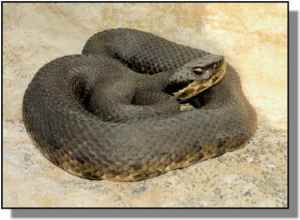
- Cottonmouth Snakes (aka Water Moccasin): First and foremost the best way to tell if it is a poisonous Cottonmouth snake is that it will have elliptical eyes (cat eyes, slits). Cottonmouths can range from Black to green so be aware that they can be different colors. One very distinctive identifying mark is a white stripe that runs down the side of the Cottonmouths head. Young Cottonmouths have bright yellow tails and adults do not have this marker, so just cause it doesn’t have one doesn’t mean its not a Cottonmouth so don’t just use that as the only marker to look for. Cottonmouth habit is usually around water or in water, they also can live on dry land but mostly near rivers, and bodies of water. They usually do not congregate in groups, they are known to be loners.
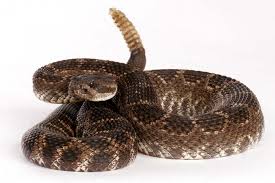
- Rattlesnakes: One obvious sign is the rattle!!! you can’t miss it. Some harmless snakes try to imitate a Rattlesnake by brushing their tails through leaves, but only Rattlesnakes have a button like rattle at the end of their tails. They look and sound like a babies rattle but are much more deadly. Rattlesnakes also have a big, heavy triangle shape head, and elliptical eyes. So if you can’t see their tails look for those two distinguishing factors.
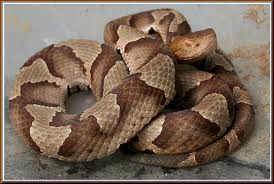
- Copperheads: Copperheads are a fascinating species, they are gorgeous snakes but don’t let the beauty fool you. Their bodies are very similar to Cottonmouths but their color is much brighter, which ranges from a coppery brown to a bright beautiful orange, or a silver-pink and peach color. The young ones have a bright yellow tail just like Cottonmouths .
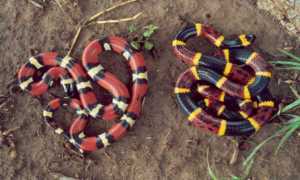
- Coral Snakes: This is another beautiful snake but don’t under estimate it cause its pretty. It is very dangerous. Coral Snakes have a very distinctive color pattern. They have a black, yellow, and red bands, a yellow head, and a black bank over their nose. One rhyme to help you remember how to distinguish a Coral Snake from a King Snake cause they are very similar is “Red Touch yellow, kill a fellow. Red touch black, friend to jack”. Another one is “Red on black, lucky jack; red on yellow, he’s one deadly fellow”. Coral Snakes are very shy and will usually run from you then attack you but that doesn’t mean you should try to approach one. Currently their are no known deaths by the Arizona Coral and only a few from the Eastern Coral.
- Color Patterns: Venomous Snakes in the U.S. tend to be different colors. If you see a snake that is a solid color in the U.S. it will most likely be non-venomous, but this is not the rule of thumb, some Cottonmouths are venomous and they can almost one solid color.
- Head Shape: Non-Venomous snakes usually have a spoon-shaped rounded heads and venomous snakes will usually have a more triangular shaped head. The reason their heads are triangular is because of the venom glands.
- Look for a Rattle: If you come across and snake and hear the distinctive rattle then you should stop, locate the snake and if you are a good distance away slowly back away from the snake but make no quikck moves.
- Heat Sensor: Some venomous snakes have a depression between their eyes and thir nostrils. This is called a pit, this is used by the snake to sense heat in their prey.
- Watch out for Mimics: Some non-venomous snakes will mimic the patterns and behaviors of venomous snakes as a self defense tactic. Eastern milk snakes can look like Copperheads, Rat snakes can look like Rattlers, and a harmless King snake can look like a Coral snake. When you first come across a snake always assume that it is a venomous snake, until you can verify weather it is or is not. Even though you will want to kill a snake when you come across it be careful cause it could be against the law and another reason is because snakes control rodent populations, and also control snake populations as well.
- Watch how the snake swims: Another interesting way to tell the difference between a venomous water moccasin/cottonmouth and a harmless water snake is to watch the way it swims, if it swims with only its head above the water, or weather most of its body is floating too. If you only see the snakes head above the water then it is most likely a non-venomous snake, most of the time all venomous snakes will inflate their lungs so that they bodies float while they swim. EIther way it is a good idea to leave the snake alone and let it go about its merry way.
- Eyes: One of the easiest and best way to tell if a snake is venomous or non-venomous. If the snake is venomous it will have elliptical eyes like a cat, like the little devils that they are and if it is non-venomous it will have round eyes like a human.
I hope you paid very close attention to this article cause it could save your life sometime. This was not an in-depth post on venomous snakes but it is enough so you can tell the difference between the two and make an educated descision on what to do. One rule of thumb that you should live by is if you see a snake don’t mess with it, just leave it alone and it will most likely leave you alone. Even though snakes are scary, and nasty they are an important part of our ecosystem and they honestly do more good then they do harm. If you have an questions or comments please leave them below. Also don’t forget to click on the button at the bottom of the page and become a follower so you don’t miss out on any new posts.
Thank you for reading
NW Tactical
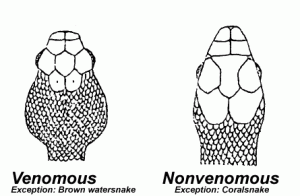
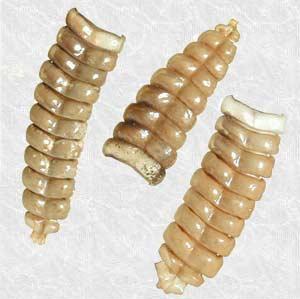
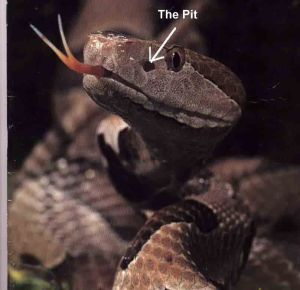
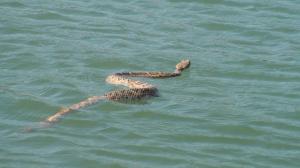
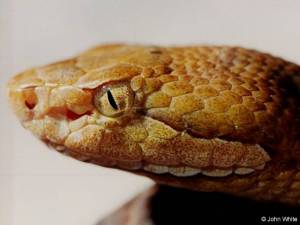
Thanks for the info
Hi friend. I want to talk with you. can you contact through this mail. rahmatullaalisayyed@gmail.com
Nicely written, thanks. I am moving from Illinois to Kentucky, which is close distance but still wanted to know what is venomous. Funny thing is, I spotted a rattler in Northern IL for the first time this summer. Never knew they were in this region.
thanks for your class.
this will help me muchy when dealing with dnske bites.
iam a first aider in all spheres.
have a nice moments.
so on the picture about the heads it says that the corral snake is non venomous but you say it is venomous what one is it ?
Hi thank you so much for reading my blog and taking the time to ask this question. The picture shows one head that is what usually venomous snakes look like and the other shows what non venomous snakes look like but under the non venomous snake head they say that that Corral Snake is the exception to the rule. So they have the head of a non venomous snake but are indeed venomous. I hope this helps please let me know if you have anymore questions.
Coral snakes do not follow the traditional rules on identifying venomous snakes. They are highly venomous and carry a neurotoxin unlike the pit vipers which carry hemotoxin.
Just so you know, milk snakes resemble more of a coral snake than kings do… I have owned kings and milks and the difference is quite obvious…
great article! just helped my husband. We think it was a huge rat snake we saw instead of a cottonmouth. Could you post a picture of the head of a black rat snake beside the head of a black cottonmouth? Thank you
Such a helpful, clear, concise article. Thank you for the great info